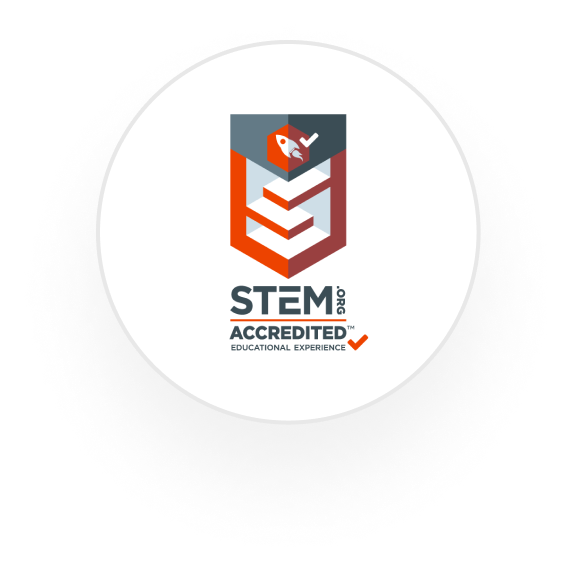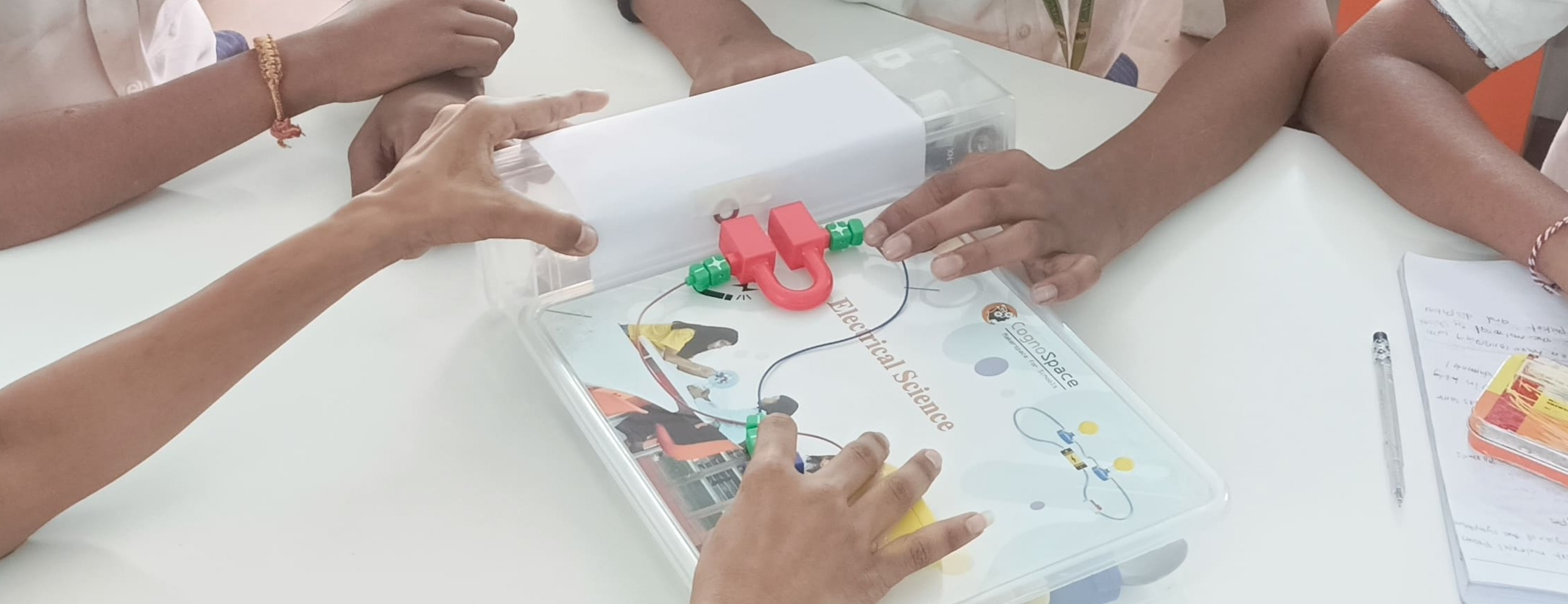
How to make STEM initiatives
impactful and successful

Importance of STEM Education
STEM (short for Science Technology Engineering and Mathematics) education plays a crucial role in shaping the workforce of the future. The demand for STEM skills is ever increasing in today's rapidly evolving job market. STEM education not only equips students with technical knowledge but also fosters critical thinking, problem-solving, and innovation. By promoting STEM education, we can prepare students to tackle real-world challenges and drive advancements in various fields.
Hands-on learning, a key attribute of STEM education, engages students in learning by letting them apply theory in practical scenarios, deepening their understanding and problem-solving skills. Connecting STEM concepts to real-world applications makes learning more meaningful and relevant, showing students the value and impact of their knowledge. Encouraging collaboration on projects helps students learn to communicate effectively, leverage each other's strengths, and achieve common goals, reflecting the teamwork essential in real STEM careers.
Common challenges faced by schools
However, implementing a STEM program is not easy. Schools need to overcome many challenges to plan, implement, evaluate, and maintain the program. Below are some of the common challenges encountered by the schools.
1. Being more focused on grades/ranks and not able to give importance to STEM
Focusing too much on grades and ranks can lower the importance of STEM education, causing students to fall behind in developing a deep understanding of the concepts. Emphasizing hands-on learning of concepts and exposure to real-world applications in STEM fosters genuine curiosity and critical thinking, which are essential for innovation and lifelong interest in these fields.
2. Lack of comprehensiveness in the program
Many STEM programs are limited in coverage. Offering just a robotics program is not enough; it represents only one of the many facets of STEM. Often, these programs are launched as isolated subject areas that happen to be trending at the time. Instead, they need to integrate a comprehensive curriculum that encompasses multiple disciplines, such as mathematics, different engineering domains, technology, and the sciences. This multidisciplinary approach ensures that students gain a well-rounded understanding and can see the connections between different fields, fostering innovation and critical thinking skills..
3. Lack of skilled resources
Many schools face significant challenges in providing skilled resources capable of delivering hands-on learning. Without knowledgeable teachers and adequate resources, implementing experiential learning becomes difficult. This gap hinders students' ability to fully engage with and understand STEM concepts, ultimately limiting their learning potential and interest in these crucial fields.
4. Lack of funds to setup necessary infrastructure and resources
Another significant challenge is the lack of sufficient funding to run effective STEM programs, which require substantial investment in equipment, materials, and training. Many schools struggle to allocate the necessary budget, leading to inadequately equipped labs and limited access to cutting-edge technology. Without proper financial support, it's difficult to provide the high-quality, hands-on experiences that are essential for student engagement and learning in STEM fields.
Strategies for Making STEM Initiatives Successful
Despite numerous challenges, some schools have successfully implemented STEM initiatives. Below are strategies and guidance followed by these schools to achieve success.
1. Developing Partnerships with Industry Experts
Collaborating with industry experts allows students to gain insights into real-world practices and trends. By establishing partnerships with professionals in STEM fields and tapping into government-funded programs, educators can enrich the learning experience and provide students with valuable mentorship opportunities.
2. Incorporating STEM Across Different Subjects and Grade Levels
Integrating STEM concepts into various subjects and grade levels ensures a holistic approach to education. This interdisciplinary integration helps students see the relevance of STEM in diverse contexts, fostering a deeper understanding and appreciation of these fields.
3. Providing Professional Development for Educators
Investing in professional development for educators is crucial for the success of STEM initiatives. By equipping teachers with the necessary knowledge and skills, they can deliver high-quality STEM education and inspire students to pursue STEM careers. Obtaining certifications such as those from STEM.org can further enhance educators' capabilities.
4. Integrating STEM Learning into the Regular Timetable
Incorporating STEM learning into the regular curriculum allows students to develop a culture of hands-on learning. This routine engagement helps improve cognitive skills, enhance problem-solving abilities, foster critical thinking, and nurture creativity.
5. Establishing Dedicated STEM Labs and Infrastructure
Setting up state-of-the-art STEM labs, rather than using regular classrooms, generates interest and curiosity among students. Dedicated labs create a conducive environment for experiential learning and can lead to a cultural shift in students' attitudes toward STEM education.
6. Providing Access to Digital Resources
Access to digital resources is crucial for modern STEM education. Digital tools and online platforms offer students interactive and engaging learning experiences, allowing them to explore concepts beyond the traditional classroom. These resources support individualized learning, foster critical thinking, and enhance problem-solving skills, preparing them for the demands of the 21st-century workforce.
7. Measuring Student Outcomes and Achievements
Tracking student progress and outcomes helps assess the effectiveness of STEM initiatives. By monitoring achievements, educators can identify areas for improvement and tailor instruction to meet individual student needs.
8. Tracking Long-Term Success and Retention in STEM Fields
Monitoring the long-term success and retention of students in STEM fields provides valuable insights into the impact of STEM education. Analyzing career paths and achievements helps measure the long-term effects of STEM programs and informs future initiatives.
9. Collecting Feedback from Stakeholders for Continuous Improvement
Engaging stakeholders, including students, parents, and industry partners, in the evaluation process is essential for continuous improvement. Gathering feedback from all involved parties helps identify strengths and areas for growth, enabling data-driven decisions to enhance STEM initiatives.
How CognoSpace can make a difference?
CognoSpace is a pioneer in bringing experiential learning based STEM/STEAM programs to schools. We build state-of-the-art experiential learning labs to foster the culture of experiential learning and also provide trained resources to schools to deliver 400+ hands-on learning topics that are deeply integrated with regular class curriculum. The topics go deep into different areas of STEAM and provide a truly multidisciplinary curriculum as expected by the National Education Policy (NEP 2020). The program leverages advanced technology such as Virtual Reality for industrial tours and visiting historical places.
With upfront investments in capital and resources, CognoSpace makes it super easy for schools to set up and launch a comprehensive experiential learning focused STEAM program. The program is designed to be very flexible in order to integrate with schools’ daily schedules. Our goal is to create an educational experience that is flexible, discussion-based, and tailored to the needs and curiosities of learners, thereby shaping a future where education is not just a process but a transformative experience.
